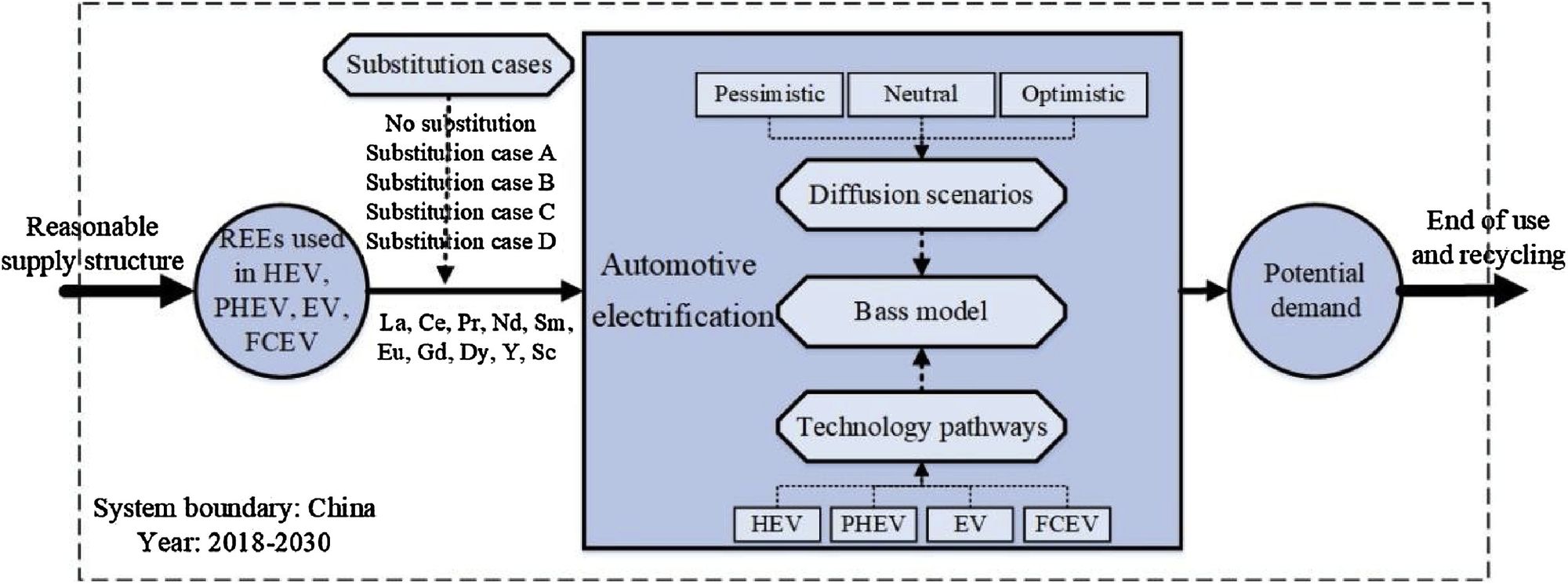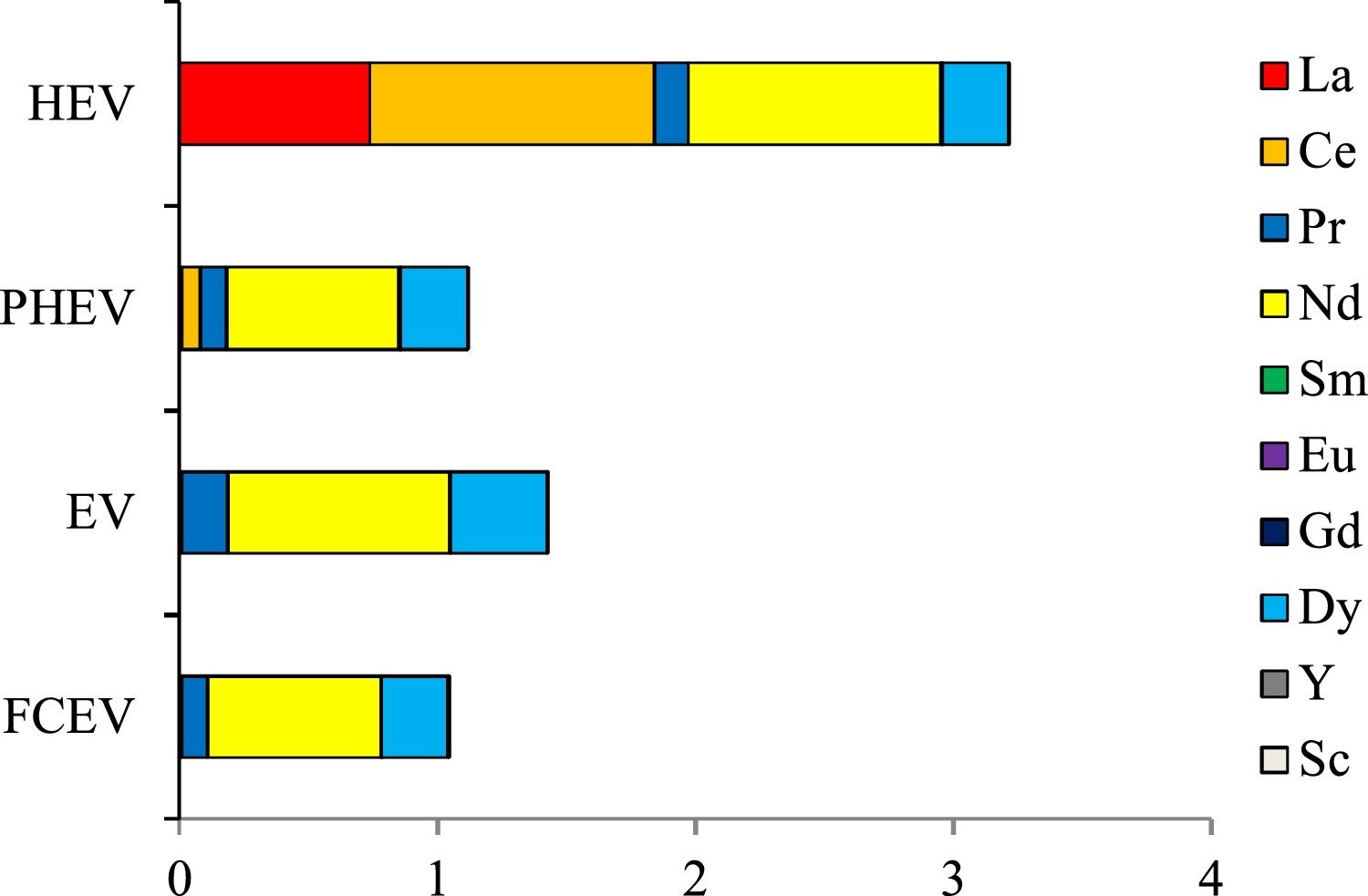Li, Xiang Yang; Ge, Jian Ping*; Chen, Wei-Qiang*; Wang, Peng
Resources, Conservation and Recycling 2019 145, 322-331. DOI: 10.1016/j.resconrec.2019.02.003
Abstract
China is accelerating automotive electrification to address the pressing oil shortage and environmental pollution issues. Automotive electrification can be achieved through four different major technology pathways: hybrid electric vehicles, plug-in hybrid electric vehicles, battery electric vehicles and fuel cell electric vehicles. These pathways all heavily rely on the use of critical mineral resources, such as rare earth elements (REEs). This study establishes different scenarios of the future technology mix and growth in automotive electrification in China by 2030 to predict the future demand of REEs associated with such scenarios. The widely applied Bass model is chosen to predict the future growth of these four technology pathways for electric vehicles under pessimistic, neutral and optimistic demand scenarios. Given the potential for technological advances, the effects of changes in the material intensity and component substitution are considered to effectively reflect future demand changes. Accordingly, the REE demand associated with the four technology pathways from 2018 to 2030 is estimated. The highest demand for REEs in automotive electrification will reach 315 thousand tons, accounting for 22% of global production during the prediction period. Specifically, the demands for Nd, Dy, Ce, Pr, and La will account for 51%, 20%, 12%, 9.5%, and 7.7% of the total demand, respectively. Moreover, the contrast between the supply and demand of Dy and Pr will be extremely large, and these elements will require more attention than others. For the successful development of automotive electrification in China, related policies and plans regarding the supplies of different types and quantities of REEs should be urgently established.
Framework for predicting the demand for REEs in automotive electrification.

REEs directly used in HEVs, PHEVs, EVs and FCEVs.
